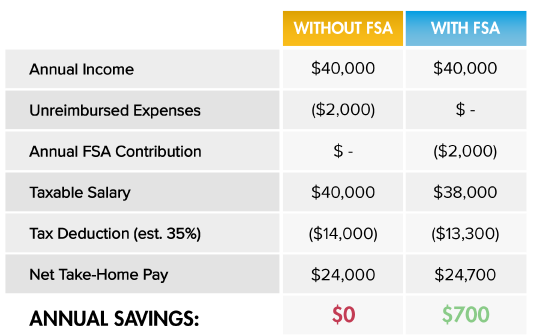Although mandates continue to be included as medical insurance requirements, they are questionable. Client advocates claim that mandates assist to ensure appropriate medical insurance protection while others (especially health insurance business) grumble that requireds increase the expense of health care and health insurance coverage. Mandated medical insurance laws passed at either the federal or state level usually fall into among 3 categories: Healthcare services or treatments that should be covered, such as compound abuse treatment, birth control, in vitro fertilization, maternity services, prescription drugs, and cigarette smoking cessation.
Dependents and other related people, such as adopted kids, reliant students, grandchildren, and domestic partners. The mandated benefit laws most often apply to medical insurance protection used by employers and personal medical insurance purchased directly by a person. Many people whether for or against requireds agree that mandated health advantages increase health insurance premiums.
1% to more than 5%. Attempting to figure out how a mandated advantage will affect an insurance premium has been very complicated. The required laws differ from one state to another and even for the exact same mandate, the rules and guidelines might differ. For example: A lot of states mandate coverage for chiropractics physician, but the number of allowed check outs might vary from state to state.
Considering that chiropractic physician services can be costly, the effect on health insurance coverage premiums may be higher in the state with the more generous advantage. Furthermore, the absence of requireds could likewise increase the cost of health care and medical insurance premiums. If someone who has a medical problem goes without required health more info care due to the fact that it is not covered by his/her insurance coverage, he or she might end up being sicker and require more expensive services in the future.
( B) STATES MIGHT REQUIRE FRINGE BENEFITS.( i) IN GENERAL.Subject to the requirements of provision (ii), a State may require that a competent health insurance used in such State deal advantages in addition to the vital health advantages defined under area 1302( b).( ii) MENTION MUST ASSUME COST.Replaced by area 10104( e)( 1 ). A State will make payments( I) to a specific enrolled in a competent health insurance offered in such State; or (II) on behalf of a specific explained in subclause (I) directly to the qualified health insurance in which such person is registered; to settle the expense of any fringe benefits described in clause (i).
Which Level Of Health Care Provider May Make The Decision To Apply Physical Restraints To A Client? - An Overview
The choice did not affect other provisions. The info on this web page continues to show state actions attending to the ACA. For NCSL's updated summary and analysis of the Court's choice and its results see: U.S. Supreme Court and Federal ACA The state sections of this online report are an informal summary explanation of state and federal requirements and are not meant as legal advice.
February 1, 2021 DETROIT, February 1, 2021 Health Alliance Strategy, a Michigan-based nonprofit health plan, revealed today that it has added 5 prominent.
The Act defines certain categories of advantages as "Important Health Benefits." The categories of necessary health benefits are: Ambulatory patient services Emergency situation services Hospitalization Maternity and newborn care Mental health and substance utilize disorder services, including behavioral health treatment Prescription drugs Corrective and habilitative services and gadgets Lab services Preventive and wellness services and persistent disease management Pediatric services, including oral and vision care Health insurance, consisting of self-insured plans, that cover Important Health Advantages (EHB) might not apply dollar annual or life time dollar limits to the advantages.
The New York State Department of Health (DOH) announced the availability of $355 million under the Vital Healthcare Company Support Program (EHCPSP), as established pursuant to Section 2825-c of the Public Health Law (PHL). The EHCPSP supplies moneying to important healthcare providers that supports financial obligation retirement, capital projects or non-capital jobs, for the purpose of facilitating their transformation through mergers, consolidation and restructuring activities intended to create economically sustainable systems of care.

Through RFA # 1510190320, applications were granted to essential healthcare suppliers that have actually shown a dedication to developing innovative designs of health care shipment. Awards were revealed on March 4, 2016. On March 23, 2016, the Department of Health hosted a webinar for awardees. The following guidance is offered: CRFP and EHCPSP Grants: Concerns and Answers.
What Does Countries Whose Health Systems Are Oriented More Toward Primary Care Achieve: Mean?
The outcry over brand-new recommendations that question cancer screening guidelines for females when and how often to have mammograms and Pap smears lights up problems that will be faced again and once again in the battle to include health care costs. Late last year, the U.S. Preventive Solutions Task Force (USPSTF) and the American College of Obstetricians and Gynecologists (ACOG) recommended raising the age for regular screenings for breast and cervical cancer and extending the time in between follow-up tests.
The USPSTF advises ladies to wait up until age 50 prior to receiving their first mammogram, as opposed to age 40, and to be screened every two years rather of every year. The job force likewise suggests females stop mammograms when they reach age 75 and to stop self-examination. The task force states self-exams are not beneficial in discovering breast cancer, however do cause anxiety followed by unnecessary, expensive tests.
The company also states women in their 20s with regular Pap smear outcomes ought to be checked every 2 years rather of every year which women in their 30s can wait three years. The recommendations are causing debate. The American Cancer Society (ACS), the Society of Breast Imaging (SBI) and the American College of Radiology (ACR) oppose decrease in the administration of mammograms.
If embraced, the impact of these recommendations extends beyond the female population. which of the following is true about health care in texas?. The nation invests billions of dollars every year on diagnostic Drug Detox measures connected to these and other cancers since, as in the case of all illness, cancer is more survivable when identified in its early stages. The question is what are necessary health care expenditures? Should there be limitations on tests and treatments? Are current norms in disease prevention extremely precautious and inefficient instead of proactive and cost-saving? Currently, private health insurance companies, Medicare and Medicaid develop limits through their policies, and a chief complaint about the nation's present system is the failure of insurance provider to approve treatments in specific situations.

There are some health care advantages you can depend on getting no matter what strategy you select. The Affordable Care Act needs that all plans cover essential health benefits for specific and family strategies and small group strategies. All of our strategies use these required vital health benefits: Outpatient services Emergency services Hospitalization Maternity and newborn care Mental health and substance use disorder, including behavioral https://andyirem662.godaddysites.com/f/which-of-the-following-health-professionals-is-least-likely-to-be health treatment Prescription drugs Corrective and habilitative services and devices Laboratory services Preventive and wellness services and chronic disease management Pediatric vision A few of these advantages, like preventive services, will be paid at 100 percent without any copay.